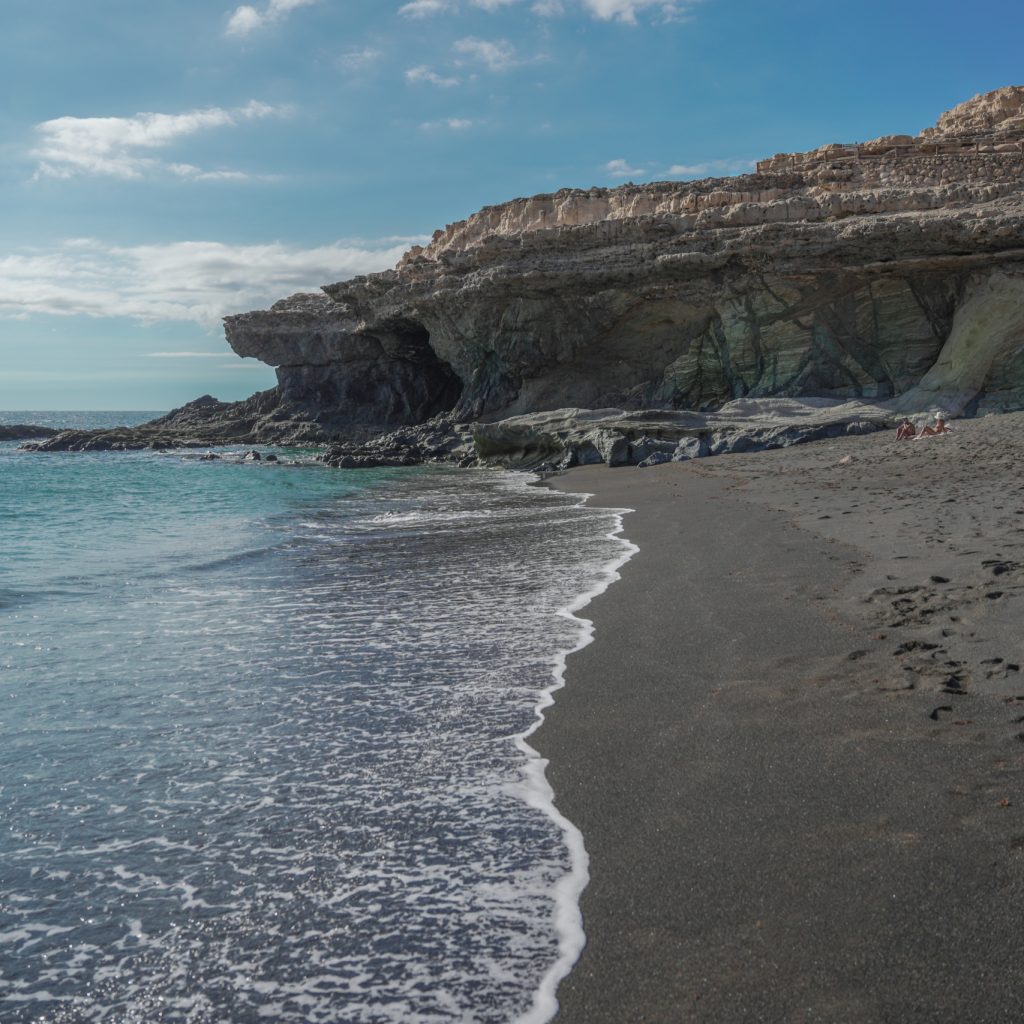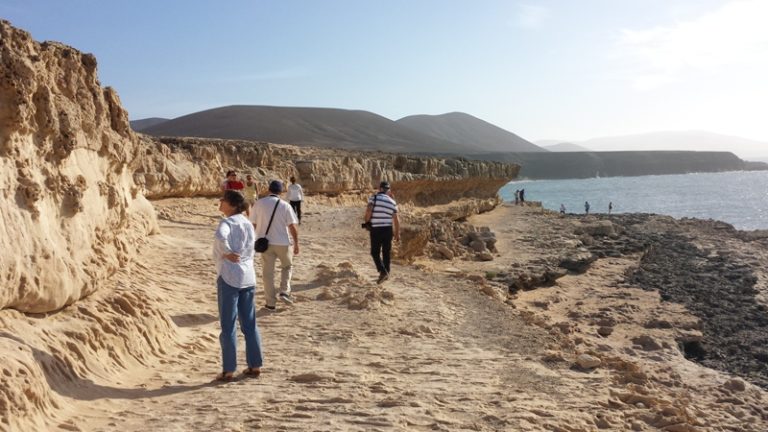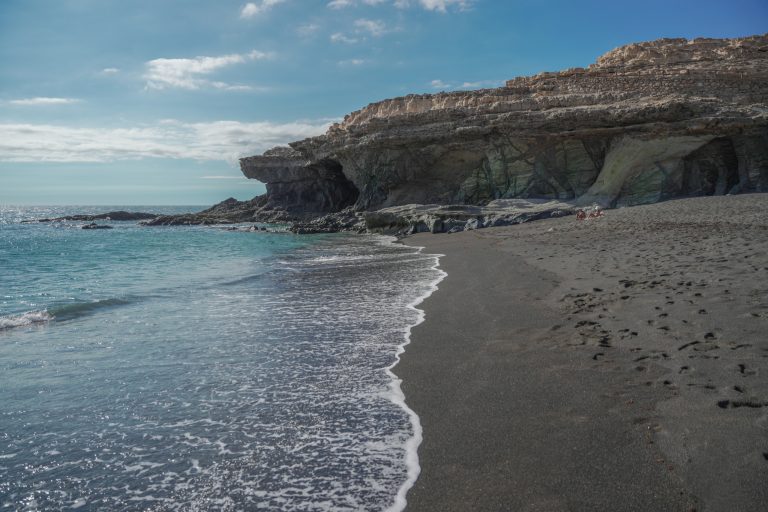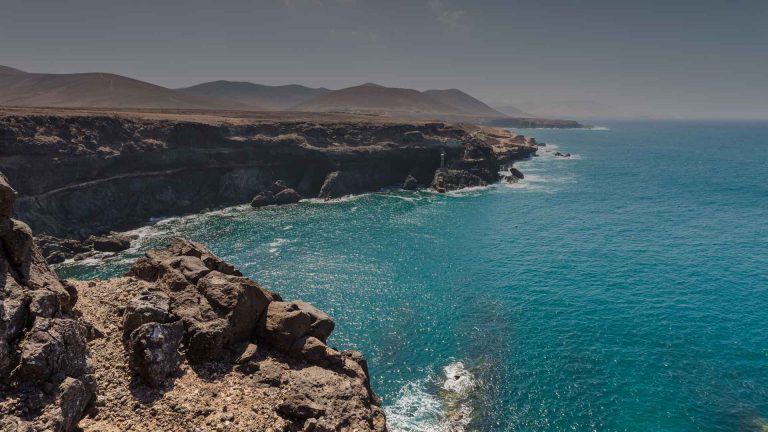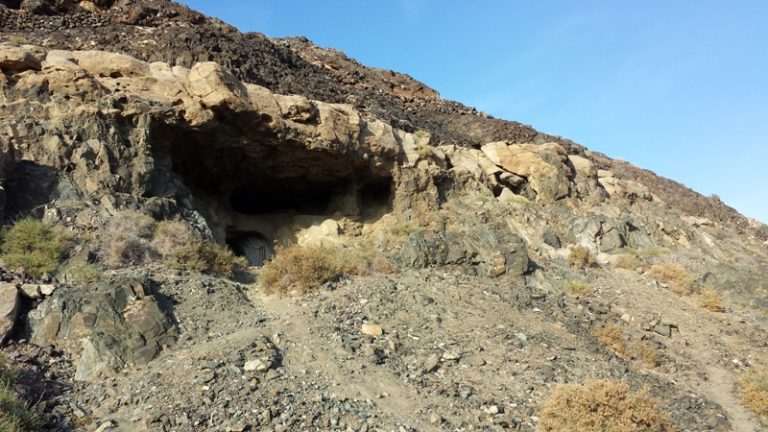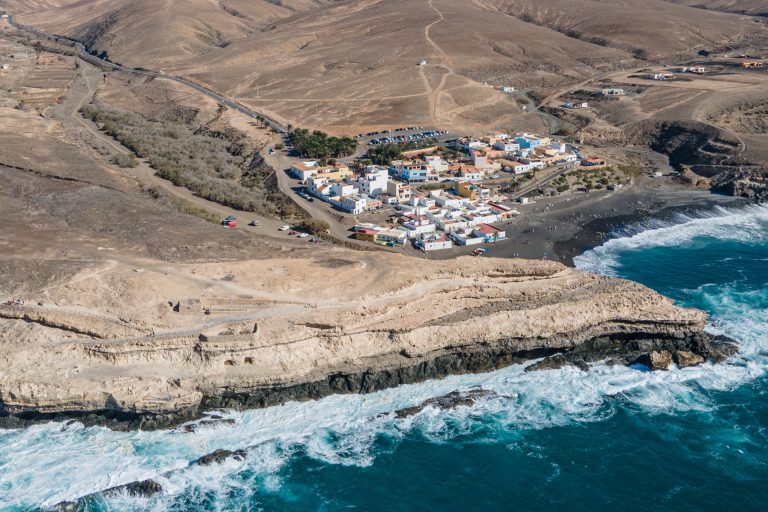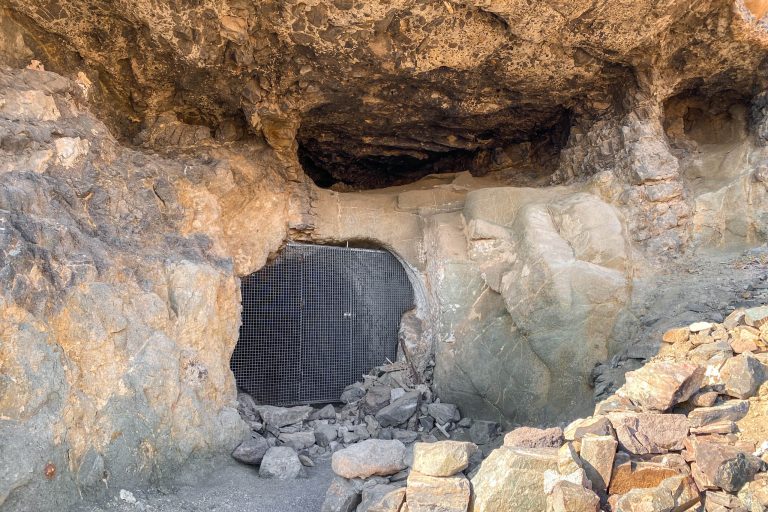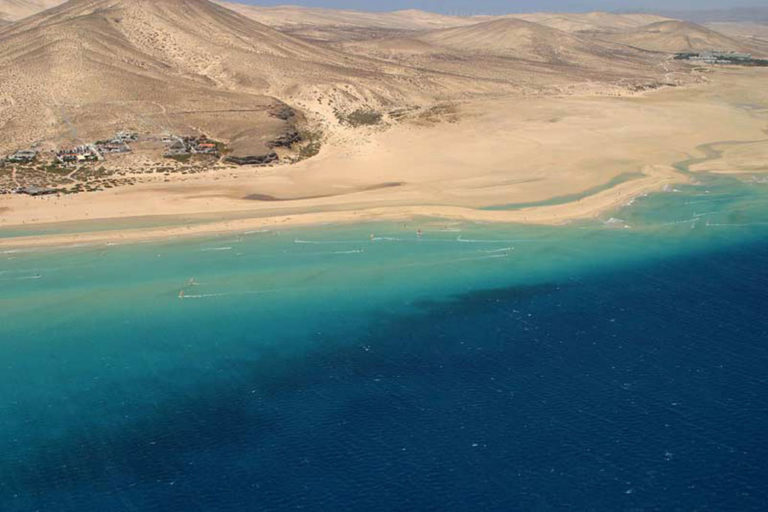At the end of Ajuy beach, 200 meters long and 50 meters wide, black sand, on the right bank of the mouth of the ravine a stone wall rises vertically whose rock has a strong banding of light and dark stripes. They are ocean floor sediments formed at the time of the dinosaurs about 170 million years ago.
Alternating shales, siltstones and sandstones, its current almost horizontal exposure of the strata is not the original, as they are actually flipped 180 degrees.
How can we know? Very easy. If we take into account that the dark, clayey layers (phthalites) are heavier than the light, sandy ones, the latter will settle more quickly to the bottom, while the former will do so more slowly, thus accumulating on the sand. But here they are backwards.
The fact that the dark layers occur at the top of the stratum instead of at the bottom is evidence of a huge flip that literally turned the rocks “upside down”.
Also evident is the extensive network of basaltic and trachytic dikes that cross them vertically, joined by an equally numerous set of fractures and abundant faults.

